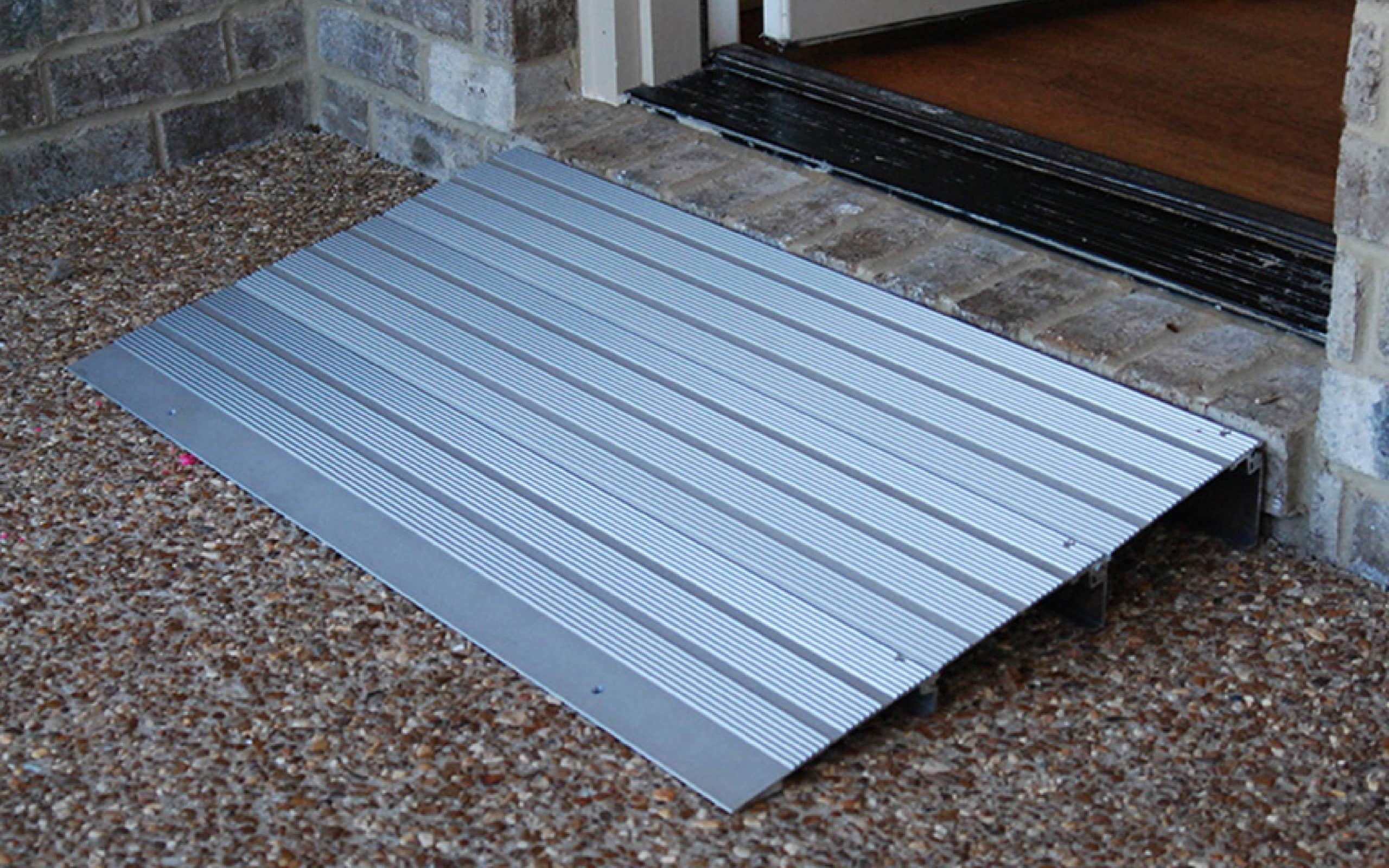If you or someone you love struggles with navigating stairs, doorways, or other uneven floors, it’s crucial that all the pathways and entryways throughout your home provide a stable, level walking surface. Portable ramps are an ideal solution for improving accessibility in your home.
Portable ramps offer a safe and convenient way for individuals with disabilities and mobility issues to access various levels and rooms within their homes. This guide gives homeowners a brief but detailed overview of the types of portable ramps available, how to choose the right one, and tips for purchasing, installing, and maintaining them.
Types of Portable Ramps
By understanding the different types of portable ramps and their uses, homeowners can make an informed decision when choosing the right ramp for their needs. There are several types of portable ramps available in the market, each with its own unique features and intended uses. These include:
Suitcase Ramps
These ramps fold in half and have a handle for easy carrying, resembling a suitcase when folded. They are ideal for short-term use and can be easily transported between locations.
Telescoping Ramps
Telescoping ramps consist of two separate pieces that slide into one another, allowing them to extend and retract as needed. This design makes them highly versatile, as they can be adjusted to different lengths depending on the situation.
Folding Ramps
Similar to suitcase ramps, folding ramps can be collapsed for easy storage and transportation. However, they typically have a longer length and higher weight capacity than suitcase ramps, making them suitable for a wider range of circumstances.
Roll-up Ramps
Made from lightweight materials, these metal ramps can be literally rolled up for easy transportation and storage. They are ideal for temporary use or situations where a permanent ramp is not feasible. While very durable, they can be quite pricey and tend to be somewhat heavier than other portable ramps.
Threshold Ramps
Specifically designed to overcome small rises or steps at doorways or entrances, threshold ramps provide a smooth transition between different floor levels.
Factors to Consider When Choosing a Portable Ramp
When selecting a portable ramp, homeowners should take the following factors into consideration:
Length and Incline
Choose a ramp with the appropriate length and incline to ensure safe and comfortable use. The length of the ramp will determine the incline, with longer ramps providing a more gradual slope. The ADA (Americans with Disabilities Act) recommends a pitch of 1:12, meaning that for every inch in height increase, there should be one foot of ramp length.
Weight Capacity
Every ramp should specify its weight capacity, which must be sufficient to accommodate the heaviest intended user and any mobility aids they may be using, such as a wheelchair or scooter.
Material
Portable ramps are typically made of aluminum, steel, rubber, and or heavy-duty plastic. Each material has its own advantages and disadvantages in terms of cost, durability, weight, and ease of use.
Non-Slip Surface
To ensure safety, choose a ramp with a non-slip surface that provides adequate traction.
Portability and Storage
Depending on how frequently the ramp will be used and transported, homeowners should consider how easy it is to set up, break down, and store the ramp.
How to Measure and Install a Portable Ramp
Proper measurement and installation are key to ensuring the safety and effectiveness of a portable ramp. Follow these steps before beginning the installation of any ramp:
- Measure the vertical rise. Measure the distance from the ground to the top of the step or threshold where the ramp will be placed.
- Determine the appropriate ramp length. Use the measured vertical rise to determine the necessary ramp length, keeping in mind that longer ramps provide a more gradual incline.
- Secure the fit. Ensure that both ends of the ramp are securely in place before use, with no gaps or uneven surfaces that could lead to accidents.
- Take safety precautions. Always follow the manufacturer’s guidelines for safe use and weight capacity limits, and consider adding additional safety features such as handrails if necessary.
Caring for Portable Ramps
To keep portable ramps in good working condition, homeowners should always be diligent to perform the following tasks on a regular basis:
- Inspect the ramp periodically for any signs of wear or damage, and address any issues as soon as possible.
- Keep the ramp clean by removing dirt, debris, and any buildup that could compromise its non-slip surface.
- Store the ramp in a dry, protected area when not in use to prevent damage from moisture and weather elements.
- Be mindful of weather conditions, as ramps can become slippery when wet or icy. Consider using a ramp cover or applying a non-slip coating for added safety.
- Replace or repair any damaged components as needed to maintain the ramp’s full functionality and safety.
Havenside Can Help with Portable Ramps
If you have any questions about portable ramps — including how to find financial assistance to purchase and install one — reach out to the home modification experts at Havenside. We understand how crucial it is for homes to be as safe and accessible as possible for their occupants, especially older adults who may struggle with mobility issues.
Havenside is always on hand to guide homeowners through the home modification process. Contact us today to learn more.

